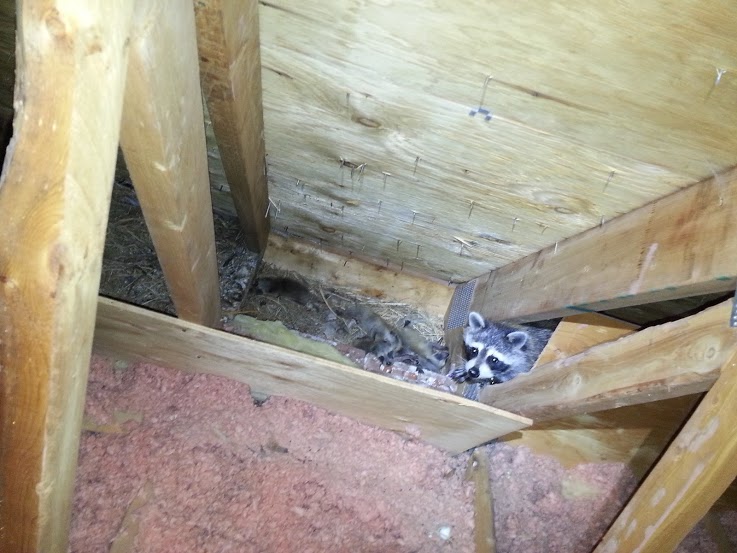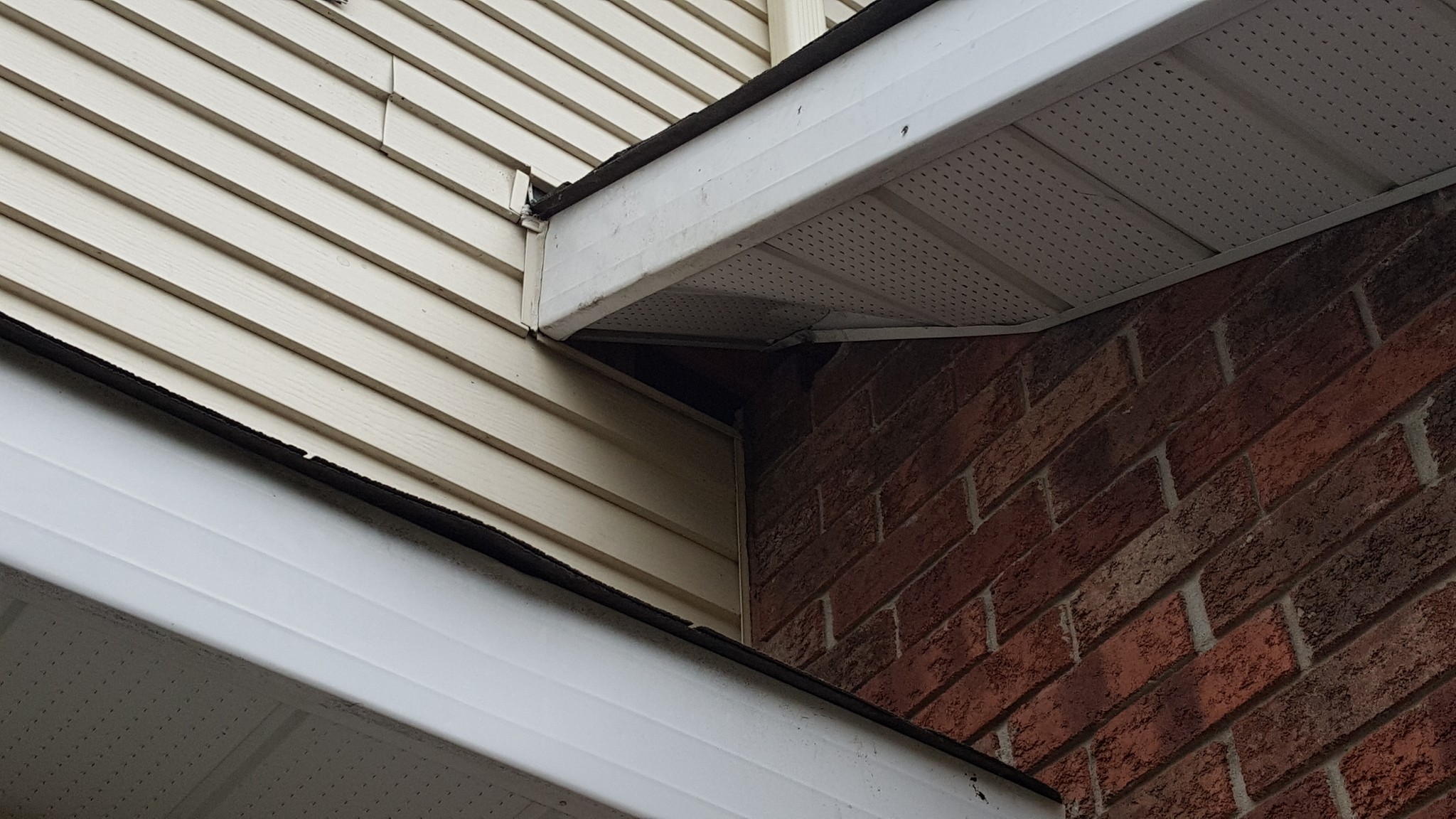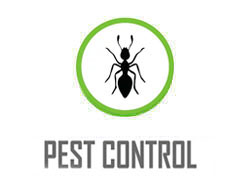
Tips on How to Deal With a Raccoon Infestation
Raccoons are nocturnal creatures that look cute and cuddly but are sneaky and sometimes dangerous. Raccoons are not afraid to come close to your home and can oftentimes be seen sorting through outdoor garbage cans for food. What starts as a simple search through your garbage may quickly turn into a perimeter search of your home, looking for a place to gain entry. Being great climbers, raccoons can scale homes using the downspout, close hanging tree branches or high fences. With over 30 years of experience removing raccoons, we’ve seen everything, including a 10 foot brick wall scaled by an adult raccoon with ease.
It is not uncommon for raccoons to come closer and closer to your home, eventually gaining access to your attic, crawl space, or chimney. Raccoons will live in your home, creating a family, while you are none the wiser. This can be a dangerous situation and one that should be handled by professionals.
HOW TO IDENTIFY A RACOON INFESTATION
If you spot a raccoon climbing around your roofline or hear the pitter patter of feet in the attic, it is time to call in the professionals. A raccoon infestation can be quite serious as raccoons can carry diseases including rabies. With professional wildlife removal, a trained expert will arrive at your home and assess the situation. The technician will be able to determine where the raccoon is entering your home and create a plan for removal. Raccoons have special paws that help them climb, so tree limbs as well as your home can create an easy climb which leads the animal accessing your attic space.

Wildlife technicians will use a humane removal strategy to humanely lure the raccoons out of the attic. This involves getting inside the attic and using hands-on techniques to force them out through their entry point. To make absolutely sure that all raccoons inside the attic are gone, a one-way door may be employed. The raccoon leaves the home in search of food and cannot get back in allowing the animal to relocate itself to one of its other den sites in the area.
The attic will need to be assessed for babies during spring and summer. Raccoon babies are removed from the attic by hand and carefully positioned outside the attic so that they can be reunited with their mother. The mother raccoon then takes the babies one by one to one of her other den sites once we have blocked off her previous entries to the attic.
CLEANING-UP
Raccoons can leave behind quite the mess after they have been removed from your attic. The creatures like to chew so you may find portions of wood need to be replaced due to damage. The attic insulation may also need to be replaced as it contains raccoon feces or urine. Feces of raccoons can be infected with roundworms known as Baylisascaris. If the eggs in the feces are ingested by humans it can lead to serious illness. Technicians will be able to recommend options for clearing out the attic as well as cleanup to ensure your home is safe and secure.
PREVENTION METHODS
After you have experienced a bout with raccoons, you will want to avoid it happening again. Prevention methods will help you to keep raccoons at bay. Any and all vulnerable areas of the house’s exterior will need to be secured and reinforced to prevent future intrusions.
Food entices raccoons. Be sure to keep all garbage containers locked up tight so raccoons are unable to gain access to garbage. You may have to remove bird feeders for a time as raccoons will also eat the feed that falls on the ground, which brings them closer to your home.
Motion lights can be added to the home to keep raccoons from approaching as they are nocturnal creatures. The light will turn on once it registers the motion of the raccoon which will trigger the animal to move away. Heavy gauge wiring can also be added to any entry points along the roofline of your home which will prevent raccoons from entering via such access points.
HOW PROFESSIONALS HANDLE A RACCOON INFESTATION?
Skedaddle technicians will use thermal imaging and their vast knowledge of raccoons behavioral patterns to quickly locate and remove all raccoons that are present. By entering through the roof, Skedaddle technicians hand remove all the waste from your attic and avoid carrying it through your home when possible. Depending on the severity of the damage and the amount of time the raccoons stayed, technicians will create a clean-up plan that works best for you. In some cases spot cleaning can take care of the mess, while in others an entire attic restoration is needed to properly clean and redistribute the insulation. Using eco-friendly cellulose insulation, we give you the best quality restoration job that will protect your attic and home for years to come.
As they make their way inside your home, raccoons can cause significant damage to your roof, siding, soffit vents, and anything else they can get their dexterous paws on. The holes they create allow for warm air to escape, and moisture to get inside your attic, which can create lasting issues over time. While they seal all entry points on your home, Skedaddle technicians will also repair any external damage caused by the raccoons.

The longer the raccoons have been using your attic as your home, the more likely attic restoration will be needed. This is why quick action to remove raccoons from your home is the best. When you are in need of raccoon removal, the best way to protect yourself, your family and your pets is to leave the job to the professionals. At Skedaddle we prioritize your safety while protecting your greatest asset. We are trained in several areas of wildlife removal services and have been successfully removing raccoons from all kinds of attics since 1989.When you are in need of raccoon infestation control, contact our team at Skedaddle Humane Wildlife Control. We are trained in several areas of wildlife removal services including raccoon removal.
CALL US TODAY
1.888.592.0387
OR
Request for Services



FOLLOW US